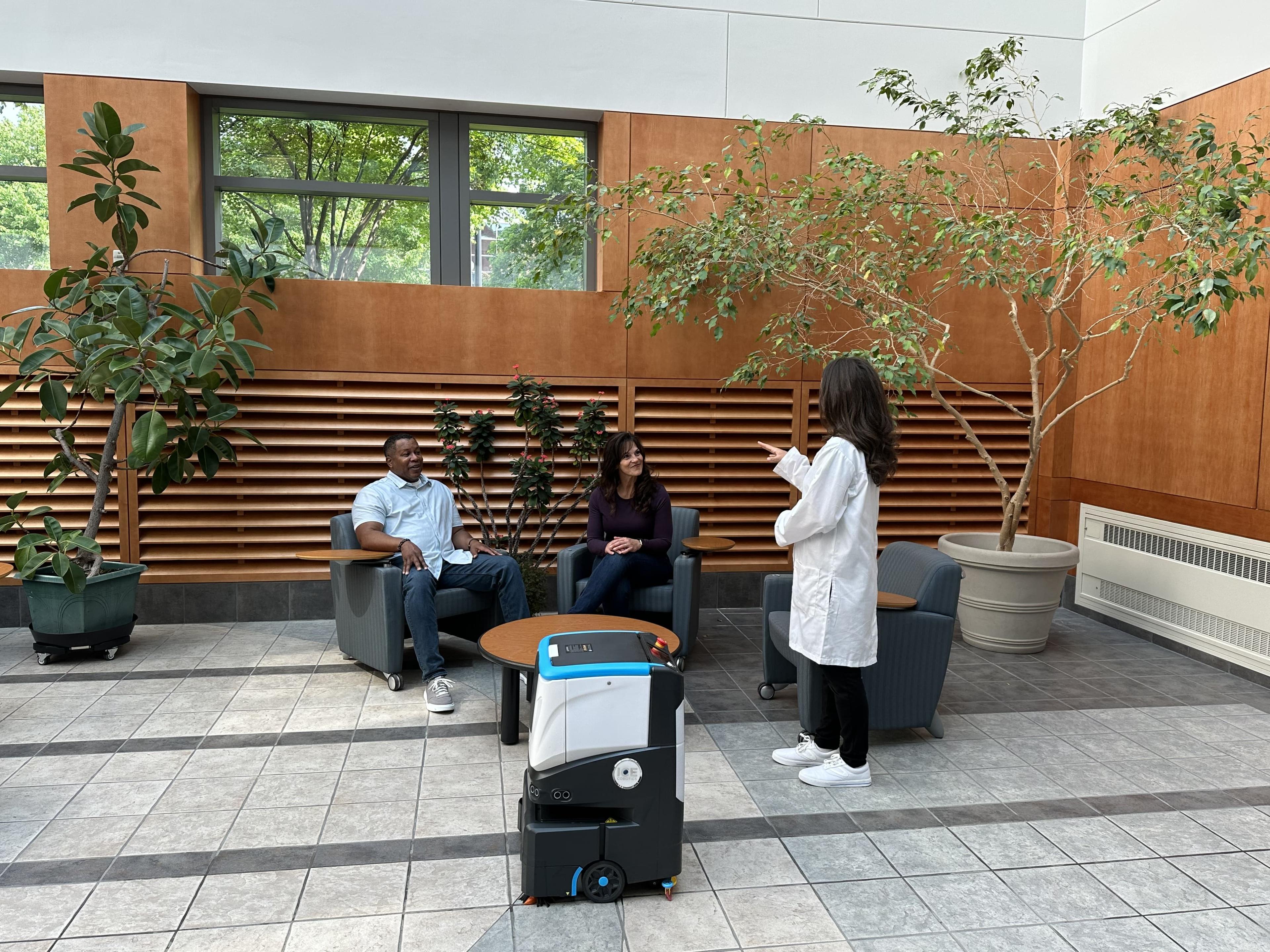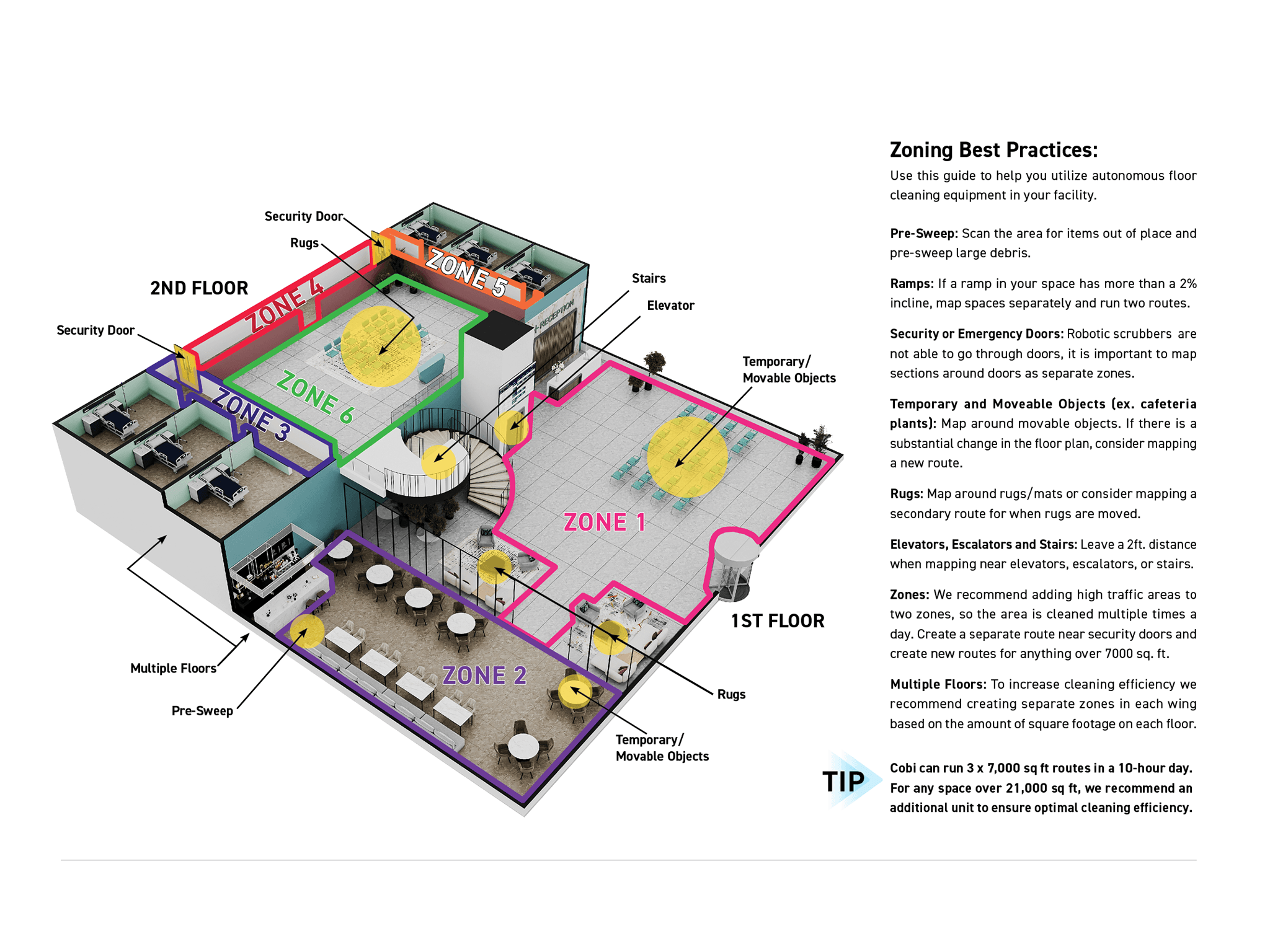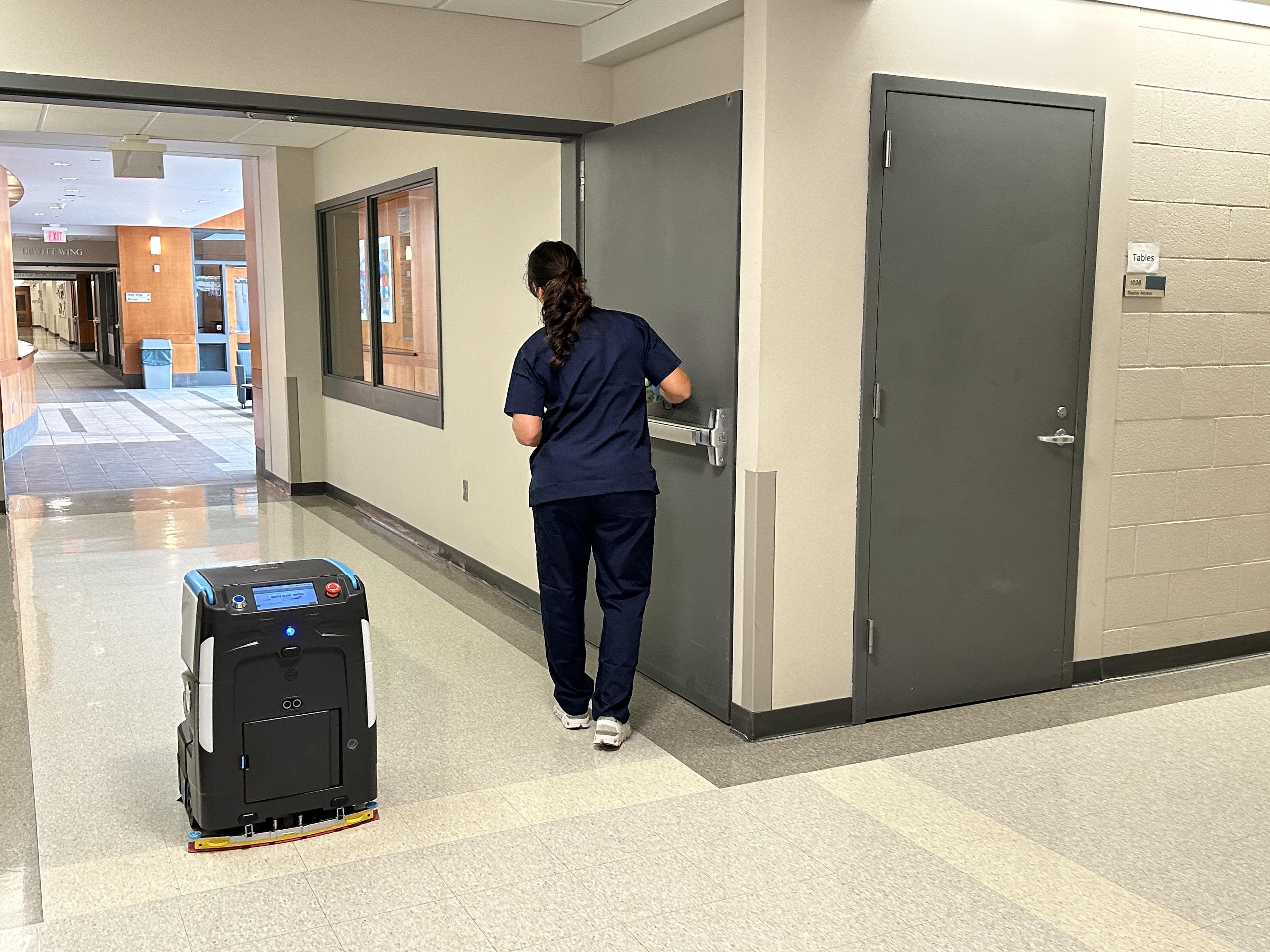June 08, 2023
Why Commercial Robots Failed Your Healthcare Facility Operations Team


The healthcare industry is no stranger to technological advancements. Over the years, the industry has seen significant innovations that have improved patient outcomes and enhanced efficiency.
This is true for facility operations departments as well. Operations leaders tasked with managing EVS teams and healthcare facility operations have attempted to adopt technology solutions, specifically robotics, to help improve cleaning processes and offset labor challenges all the while improving productivity and efficiency of the facility.
For a variety of reasons, many healthcare operations teams have struggled and failed to fully realize the benefits of robotics.
However, as autonomous solutions continue to advance, the benefits are becoming more apparent, and for many reasons are now seen as a viable solution for healthcare facilities that continue to strive to meet patient needs and expectations, and to increase efficiencies.
After all, “Sales of professional cleaning robots increased by 20% to 55 million in 2019” over 2018, according to The International Federation of Robotics, and projects continue to show wider adoption across industries. So how can you successfully adopt automation into your healthcare facility?
Below is a list of problems of the past and solutions for right now that will help you determine the best strategies to successfully adopt robotic floor cleaning equipment.
One common problem is that EVS staff members may not have been properly trained to use the new robotic technology. Even if the robots are designed to be user-friendly, there can still be a learning curve that requires time and effort from staff members.
Robotic systems can require additional training that often gets overlooked in a busy environment. While EVS teams receive more extensive cleaning training compared to cleaning teams in other disciplines, robotics training may not have been part of the onboarding for staff.
Not only do staff members need to be trained on how to operate the robots, but they also need to learn how to troubleshoot common issues, and how to integrate the robots into their existing workflows.
For those who work with technology regularly, these items may seem like common sense, but for many, it is not, and avoiding these key topics can lead to issues.
Failure to provide adequate training can lead to staff members feeling uncomfortable with the new technology, leading to resistance and limited use or no use at all.
The solution is to provide comprehensive training for EVS staff members. This should include onboarding and implementation and even designating a “site champion” or one employee who is particularly excited about robotics and can take the lead on becoming the resident expert.
A site champion can be incredibly beneficial because once this person is fully trained on the autonomous solution, other staff members have a person to reach out to if they have questions or need support.
Ongoing training is also important to ensure that staff members become comfortable with the robotic solution and learn how to troubleshoot problems on their own.
One way to provide ongoing staff training is to look for a robotics provider that offers free and accessible training materials. Videos and downloadable guides can be a great way to provide staff training, but these materials can also be accessed if a staff member needs a reminder on their own.
Making sure staff know where to find these materials and can access them easily is a great way to help them feel prepared to work with autonomous solutions.
One of the biggest obstacles to implementing robotics in healthcare facilities has been the high cost of the technology. Since much of the technology is still new, the proven ROI can be hard to identify right away. This can make it difficult to justify the expense of the equipment.
Additionally, autonomous equipment, like all equipment, needs service and upkeep. These expenditures have been difficult to plan for in the past and often leave operations directors feeling frustrated by unexpected equipment costs.
Another issue is related to the cost of implementing the machines in facilities. Many of the robotics solutions on the market require infrastructure changes which can be very costly and require extensive amounts of time and added work.
One of the best solutions is to find a supplier that has an established and cost-effective service plan. For example, ICE Cobotics offers Cobi 18, an autonomous floor scrubber, through an all-inclusive subscription. The all-inclusive subscription covers parts, customer support, service, and fleet management software.
There are no additional charges for this, so once you have your subscription payment figured out, that is all you’ll pay. This helps make budgeting more effective because there is only one set payment amount throughout the subscription.
Additionally, Cobi 18 comes with an onboard charger. This means there is no need to make infrastructure updates to adopt the unit. Cobi can be plugged into any normal wall charger, making it simple and affordable to implement in any facility.
Finally, as robotics technology becomes more common, it is also more affordable. There are options on the market that are much more cost-efficient than the robotics technology of the past.
One of the challenges faced by healthcare facilities when implementing cleaning robotics is the problem of these robots not working effectively. Despite the potential benefits of using cleaning robots to enhance cleanliness and infection control, several issues can hinder their successful integration into healthcare settings.
One common problem is that cleaning robots may struggle to navigate complex environments. Healthcare facilities are often large and have intricate layouts with multiple rooms, corridors, and obstacles such as furniture and medical equipment.
Cleaning robots need to be able to navigate these environments safely and efficiently, ensuring that all areas are adequately cleaned. However, some cleaning robots may lack advanced mapping and navigation capabilities, leading to suboptimal cleaning performance.
To address the problem of cleaning robots struggling to navigate healthcare facilities, researchers and developers have been focusing on improving mapping and navigation capabilities. This involves utilizing advanced technologies such as simultaneous localization and mapping (SLAM) and sensor fusion to enhance the robot's understanding of its surroundings.
SLAM allows the cleaning robot to create a map of the environment and simultaneously determine its position within that map. This enables the robot to navigate autonomously, avoiding obstacles and efficiently cleaning designated areas.
Additionally, sensor fusion integrates data from different sensors, such as cameras, lidar, and infrared sensors, to provide a more accurate perception of the environment and ensure safer navigation.
Advancements in artificial intelligence and machine learning have also contributed to the improvement of cleaning robots. These technologies enable the robots to learn from their experiences and adapt their cleaning strategies over time. By analyzing patterns and feedback, they can optimize their cleaning routines and address specific cleaning requirements in different areas of the healthcare facility.
By improving mapping and navigation capabilities, cleaning robots can overcome the challenge of navigating complex healthcare environments. This leads to more efficient and thorough cleaning, contributing to enhanced infection control and overall cleanliness in healthcare facilities.

Early robotic cleaning solutions lacked the necessary adaptability, versatility, and ability to work alongside human staff members. These limitations hindered their effectiveness in meeting the unique cleaning requirements of healthcare environments.
Early robotic systems were often designed to operate independently, working on pre-programmed paths, and performing predefined tasks. They could not adapt to changing circumstances or handle dynamic environments typically found in healthcare facilities. This resulted in suboptimal cleaning performance and the need for constant human intervention.
To address the limitations of early robotics in healthcare facilities, the solution lies in the use of cobots, or collaborative robots, for cleaning purposes.
Cobots are specifically designed to work alongside humans, collaborating and assisting them in various tasks. They offer several advantages when it comes to cleaning in healthcare settings.
Flexibility and Adaptability: Cobots are designed to be highly flexible and adaptable. They can handle diverse cleaning tasks and adjust their cleaning routines to match the specific requirements of different areas within a healthcare facility.
This adaptability ensures that all areas are effectively cleaned, even in dynamic environments where layouts may change, or new obstacles may appear.
Safe Collaboration: Unlike traditional robots that require safety barriers or cages, cobots can work safely close to humans. They are equipped with advanced safety features such as force and proximity sensors that allow them to detect the presence of humans and immediately adjust their movements to prevent accidents or collisions.
This enables them to work alongside cleaning staff, enhancing productivity and efficiency.
Ease of Use and Programming: Cobots are designed to be user-friendly and easy to program, making them accessible to healthcare facility staff with minimal training.
Cleaning staff can easily teach cobots new tasks or adjust their cleaning routines, empowering them to take an active role in utilizing and optimizing the cobots' capabilities.
Enhanced Cleaning Performance: Cobots can improve the overall cleaning performance in healthcare facilities. They can perform repetitive or physically demanding tasks, allowing human staff to focus on more specialized or critical cleaning duties.
Cobots can work autonomously or in collaboration with human cleaners, complementing their efforts and ensuring a more thorough and efficient cleaning process.
The limitations of early robotics in healthcare cleaning can be overcome by adopting cobots, collaborative robots that work alongside human staff. Cobots offer flexibility, adaptability, safe collaboration, ease of use, and enhanced cleaning performance.
By leveraging cobots' capabilities, healthcare facilities can achieve more efficient, effective, and reliable cleaning, contributing to improved cleanliness and infection control in healthcare environments.

Robotic technology has the potential to revolutionize the healthcare industry, but many obstacles must be overcome. By choosing robotic systems that are designed to work seamlessly with existing systems, providing comprehensive training to staff members, investing in more autonomous and flexible systems, and finding cost-effective solutions, healthcare facilities can reap the benefits of this promising technology.
ICE Cobotics is the leading technology and cleaning equipment company. To find out more about Cobi 18, reach out to our Automation Specialists.
Ready to Explore Automation? Talk to an Automation Expert